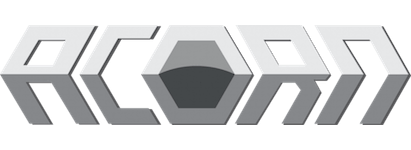
At some point every manufacturing operation will need to evaluate their inventory storage and warehouse design to identify areas for improvement. With ever-changing business requirements, increasing customer needs, and accelerating technological advances, it is essential to optimise warehouse design and layout to meet current and future needs as part of a larger supply chain process.
At Acorn we specialise in designing and managing warehouses for OEMs that are efficient, flexible, and scalable — that fulfill the services smart manufacturers need to enable a manufacturing process for highly complex, high technology, high value products. In this quick, concise guide, we share our expertise and provide a thorough overview of the key considerations for optimising warehouse design, whether it is in-house or external (and what to look for in outsourced warehouses).
An efficient warehouse has many advantages, most important of which are maximising the use of space, reducing components handling, and optimising stock turnover activity. An efficient warehouse improves inventory tracking and the managing of internal tasks, reduces picking and packing time, streamlines material flow, and eliminates congestion at key points in the supply chain.
Warehouse priority factors
Individual company and product requirements will define the priority needs for the warehouse facility.
- Maximum storage capacity & number of pallets needed.
- Grouping of SKUs, lines, and items commonly picked together.
- Frequency and maximum speed of picking, planning for non-interference.
- Peak material flow forecast, and rates of stock depletion and replenishment.
- Capacity for modification and extension of facility, along with racking/MHE ergonomics.
- Visibility of stock, with physical locations enabling ABC priorities access.
- Control of cost, with adequate ROI
Warehouse areas to consider
Configuring the warehouse
Configuring (and re-configuring existing) warehousing involves the review and (re)design of the physical layout of the facility. It is vital to evaluate whether an existing warehouse layout is still fit for purpose and whether there is an opportunity to make physical changes to improve efficiency.
By reviewing warehouse operational life, growth projections, and space requirements, you can determine whether it is necessary to expand or reformat the warehouse's layout to meet future needs. The assessment needs to take into account the storage mix necessary for your company both internally and externally to meet company supply chain priorities.
Business changes
The modern business environment is ever-changing, global supply chain pressures are volatile, and warehouses need to adapt to these changes to stay competitive. To accommodate product changes, there may be a need for increased picking or the introduction of additional services such as QA (quality assurance), kitting, sub-assembly and assembly. It is important to consider these changes when designing and determining warehouse operations, and where these additional services are deployed.
Storage and shelving equipment/media
The type and arrangement of storage media is a crucial factor in warehousing design. Conducting a storage needs analysis can help identify the optimal storage media and layout for the warehouse.
Ask if the storage media meets modern demands, and how easily they can be adapted to future requirements. Various storage media options can be used, such as pallet racking, shelving, and automated storage and retrieval systems (ASRS), and each have their own advantages and disadvantages.
Space and height need to be used effectively and aligned with industry-standard KPIs. Using industry-standard KPIs for storage media, such as the pallet positions per square meter, can benchmark performance and help to ensure that storage space is utilised efficiently.
Kanban systems and shelving are useful for operations with complex components and manufacturing needs. Acorn has on-site experience in the configuration and install of shelving and bin systems that integrate into the larger inventory management and SCM process.
Operational layout
The operational layout of a warehouse is a critical factor that can have a significant impact on its efficiency. The warehouse should flow without bottlenecks, and materials access should be straightforward and optimised. Achieving an optimal operational layout can improve the efficiency of the warehouse and reduce the task completion time.
ABC classification
Correctly allocating SKUs, minimising product flows, and identifying congestion areas can refine and improve performance in warehouse layout and design. The ABC classification system is an effective and popular method of optimising the layout of a warehouse, categorising items based on frequency, value and usage. Layout is optimised by identifying high (typically 20% of inventory), medium (30% of inventory) and low priority items (the remaining 50%), those needed at-hand, and by considerations such as value, obsolescence, rarity and storage needs.
Components are classified in four ways according to their rotation in the warehouse under the ABC method, often by unit cost, total inventory value, usage, or a combination.
— A components commonly make up 20% of inventory.
— B components make up the next 30% of inventory.
— C components make up the remaining 50% of inventory.
Audit
Regular audits of the warehouse's performance can ensure that KPIs are being met, orders are being fulfilled on time, and resources are being allocated correctly. Benchmarking against industry standards can also help identify areas for improvement. Audits should be conducted regularly to ensure that the warehouse is operating at optimal efficiency.
At Acorn we place a premium on ongoing audits and regular communication to proactively manage supply chain issues and plan for demand and disruption scenarios.
Further warehouse design topics
Other important topics to consider when designing, improving, and engineering a warehouse may include traffic flow, ergonomics, health & safety, automation, and technology integration. Evaluating these topics can improve the overall performance of the warehouse and help it to adapt to changing needs and demands.
Need help with your warehousing function? Tap into our experience helping UK critical manufacturers and OEMs with their operations.
Also: Learn how to add supply chain value by solving these warehouse challenges.
Learn about our warehouse consultancy service
Acorn's warehouse consultants can help you in redesigning and revamping your existing manufacturer warehousing, build of new storage facilities, or the optimal mix between in-house inventory storage and outsourced warehousing.










